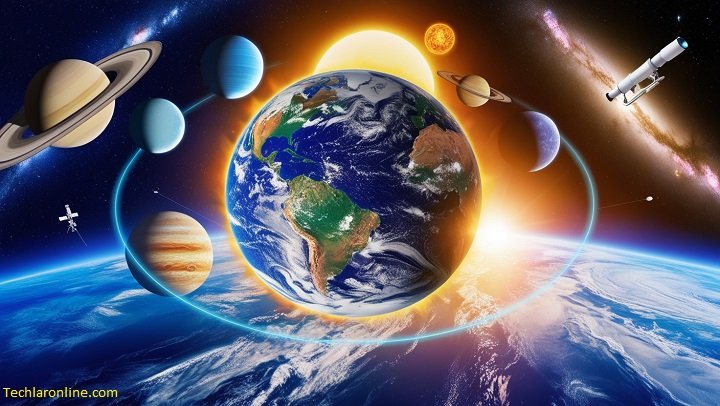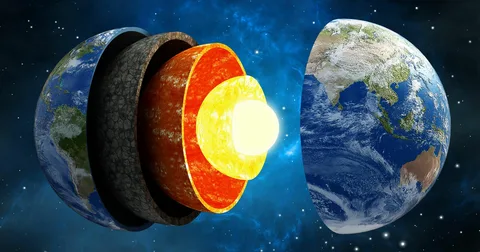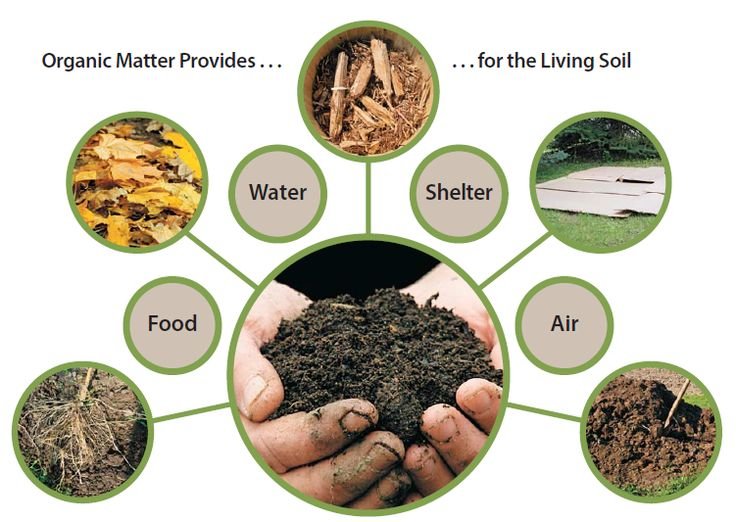
Earth and space science and space science makes a difference us get it the world around us—from the rocks underneath our feet to the stars distant over. By considering Soil and space, we learn how everything in nature interfaces, and we reveal puzzles approximately the universe. Whether it’s investigating the profundities of the sea or looking through telescopes to watch removed universes, this captivating field of science appears us fair how mind blowing our planet and external space truly are.
In this web journal post, we will investigate what Soil and space science is, why it’s critical, and how researchers consider both the Soil and external space. We’ll moreover see at a few curiously points like climate, the sun powered framework, and indeed how we look for life past Earth.
What is Soil and Earth and space science

Earth and space science is the think about of everything related to Soil and the universe past. It is a wide field that incorporates subjects like:
Geology (the ponder of rocks and Earth’s structure)
Meteorology (the consider of climate and the atmosphere)
Oceanography (the think about of oceans)
Astronomy (the think about of space and firmament bodies like stars and planets)
By understanding these diverse parts of science, we can learn how Soil works as a framework and how space interatomic with our planet. Researchers utilize Soil and space science to reply enormous questions like: How was Soil shaped? What is the climate like on other planets? Is there life past our planet?
Why is Soil and Space Science Important?
Learning around Soil and space science makes a difference us in numerous ways. To begin with, it makes a difference us ensure our planet. By considering Earth’s frameworks, such as climate designs, sea streams, and the environment, researchers can anticipate common fiascos like tropical storms, tsunamis, and seismic tremors. This information permits us to plan and spare lives.
In expansion, understanding space is pivotal for the future of humankind. As we investigate other planets and moons, we may find assets like water or minerals that seem one day offer assistance maintain human life. Researchers are indeed looking for planets past our sun powered framework that might be livable for humans.
Earth and space science moreover educates us approximately the affect people have on the planet. For illustration, examining climate alter makes a difference us get it how contamination influences climate designs and worldwide temperatures. With this information, we can make way better choices to secure the environment.
Exploring Earth’s Systems of Earth and space science
Earth is a energetic planet, meaning it’s continuously changing. Soil and space science offer assistance us get it how diverse frameworks on Soil connected with one another.
The Air: Our Defensive Blanket
The air is the layer of gasses encompassing Soil, and it’s basic for life. It gives us with oxygen to breathe, secures us from hurtful sun powered radiation, and controls our planet’s temperature. Meteorologists ponder the environment to get it climate designs, climate, and wonders like tropical storms or tornadoes.
For illustration, climate forecast has significantly progressed over the a long time much obliged to lackey innovation. Researchers can presently screen climatic changes from space, making a difference us plan for extraordinary climate events.
Oceans: Earth’s Lifeblood
Did you know that sea cover over 70% of Earth’s facade? Seas are a key piece of Earth’s weather frame and play a great part in directing heat and climate. Oceanographers think about sea stream, marine life, and how seas crash climate pattern.
load too retain carbon dioxide (CO2), making a disparity to direct Earth’s air. In any box, due to weather alter, seas are in receipt of to be more acidic, which can hurt naval life. By kind the skill of the sea, we can work to locked these crucial ecosystem.
Geology: The Ponder of Earth’s Structure
Geology centers on Earth’s physical structure, counting rocks, mountains, and volcanoes. Geologists consider forms like plate tectonics (how Earth’s plates move) and how these developments cause seismic tremors or make mountains.
One of the energizing parts of geography is learning almost Earth’s history by examining rocks. By looking at shake layers, geologists can piece together what Soil was like millions of a long time prior. For illustration, fossils found in rocks tell us that dinosaurs once meandered the planet!
Astronomy: Investigating the Universe Past Earth
While Soil is a incredible put, space is full of ponders as well! Space science is the ponder of everything exterior Earth’s air, from our possess sun powered framework to far off systems. It answers questions like: How did the universe start? What are stars made of? Are we alone in the universe?
The Sun powered System of Earth and space science
Our sun based framework comprises of the Sun and all the objects that circle around it, counting planets, moons, space rocks, and comets. Soil is the third planet from the Sun, and it’s the as it were planet known to bolster life.
The ponder of planets is called planetary science. Researchers have sent automated missions to investigate planets like Damages, and these missions give us with profitable data approximately their situations. For case, the Defaces meanderers have found prove that water once streamed on Defaces, which raises the plausibility that life may have existed there.
Stars and Galaxies
Stars are gigantic, shining balls of gas that deliver light and warm. The closest star to Soil is the Sun, but there are billions of other stars in our universe, the Smooth Way, and past. By considering stars, stargazers can learn around the life cycle of these ethereal objects—from their birth in clouds of gas to their inevitable passing as supernovae.
Galaxies are expansive collections of stars, clean, and gas held together by gravity. The Smooth Way is fair one of billions of universes in the universe. Each world can contain millions or indeed billions of stars, and a few might have planets circling them fair like our sun powered system.
The Look for Life Past Earth and space science
One of the most energizing parts of space investigation is the look for extraterrestrial life. Researchers are looking for signs of life on other planets and moons, both interior our sun powered framework and past. One promising candidate is Europa, one of Jupiter’s moons. Europa has an frosty surface, and researchers accept there may be a fluid sea underneath, which may harbor life.
In expansion to examining moons and planets, researchers utilize telescopes to look for exoplanets—planets exterior our sun oriented framework that circle other stars. A few of these exoplanets are found in the “livable zone,” where conditions might be right for life as we know it.
How Do Researchers Think about Soil and Space?

Scientists utilize a assortment of instruments to ponder Soil and space. Here are a few methods:
- Telescopes: Telescopes permit researchers to watch removed planets, stars, and systems. A few telescopes are found on Soil, whereas others, like the Hubble Space Telescope, circle in space.
- Satellites: Satellites circle Soil and collect information on climate designs, sea streams, and indeed changes in Earth’s surface.
- Space Tests: Space tests are mechanical shuttle sent to investigate far off planets, moons, and other ethereal objects. They send back pictures and information for researchers to analyze.
- Fieldwork: Geologists and oceanographers frequently go into the field to collect tests, think about shake arrangements, or investigate the sea depths.
Conclusion
Earth and space science gives us a superior understanding of the planet we call domestic and the universe that encompasses it. From considering climate designs to looking for life on other planets, this department of science answers a few of the most interesting questions approximately our world and past. By proceeding to consider Soil and space, researchers can offer assistance unravel numerous of the challenges we confront, from securing the environment to investigating unused wildernesses in space.
If you need to jump more profound into Soil and space science, you can investigate more at NASA’s official site or studied articles from the National Geographic Society.
By considering Soil and space science, we not as it were learn more around our planet and universe, but we too prepare ourselves with the information to make the future brighter for everybody. Keep investigating and remain curious—there’s continuously something unused to find.